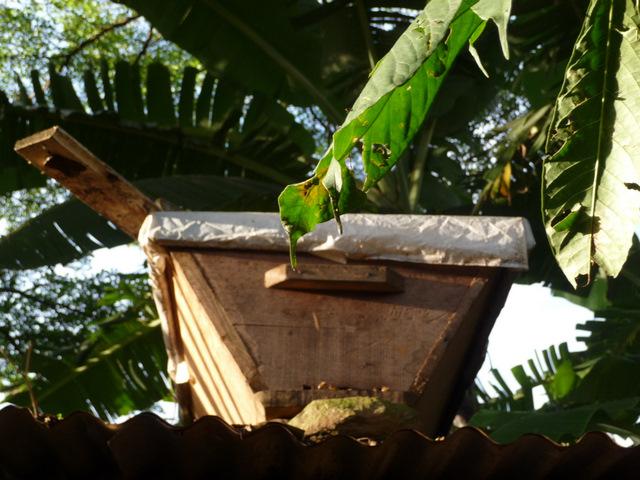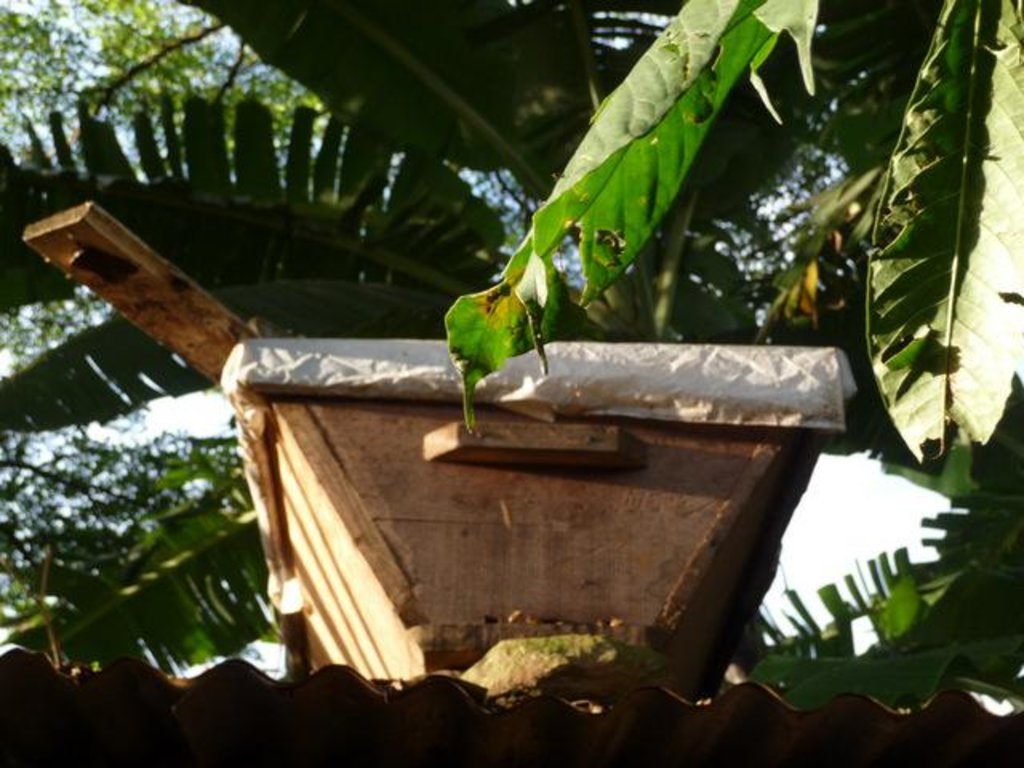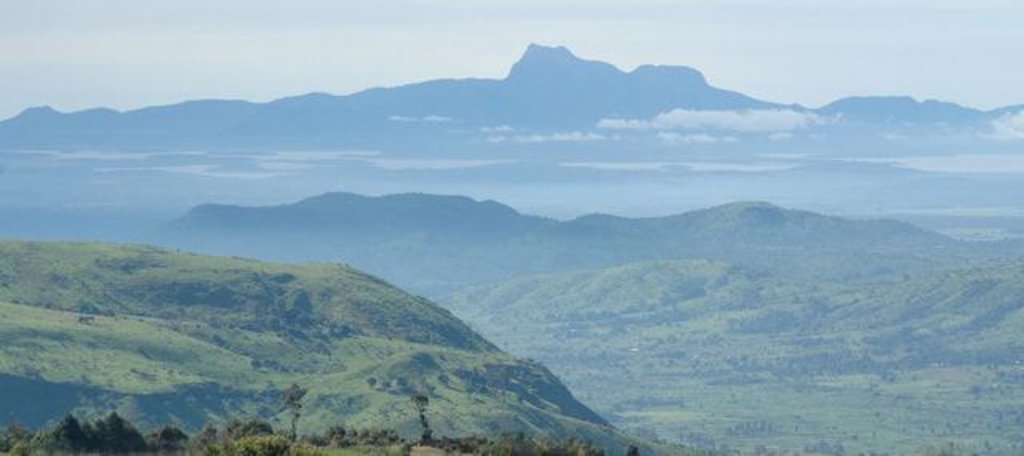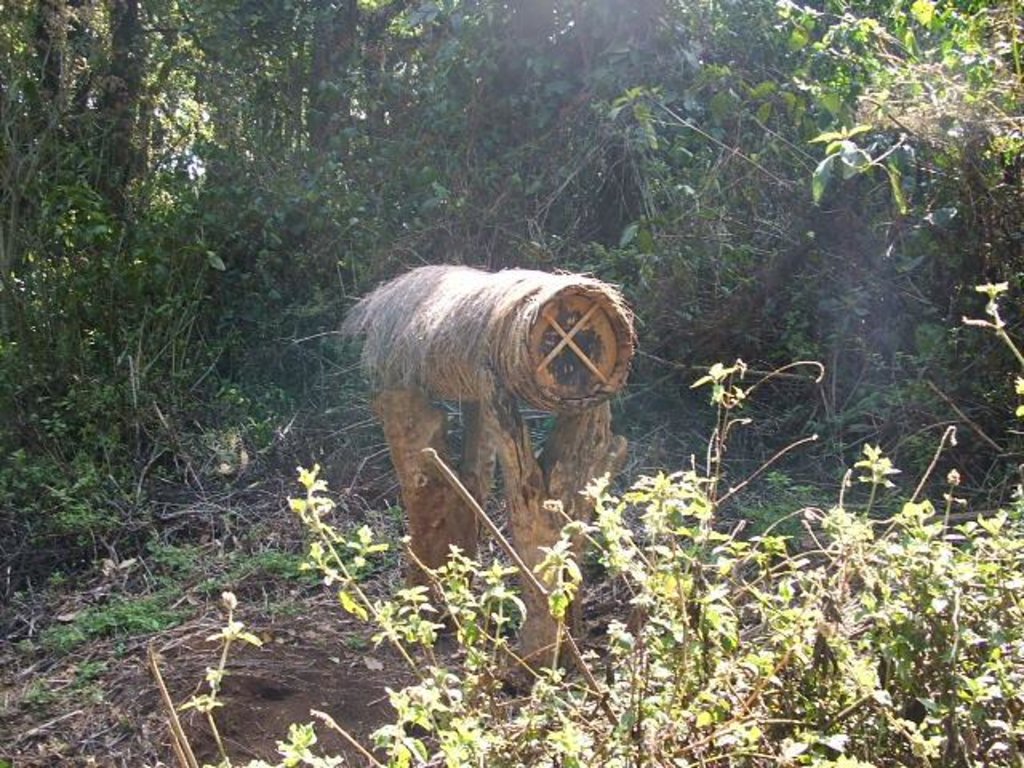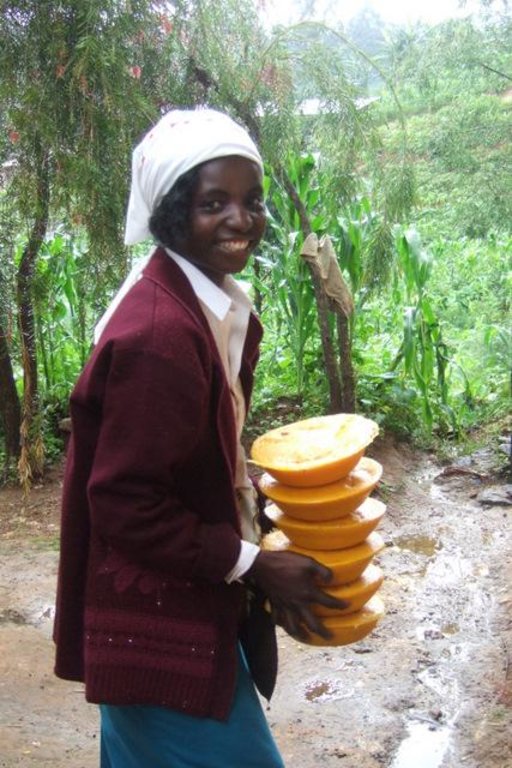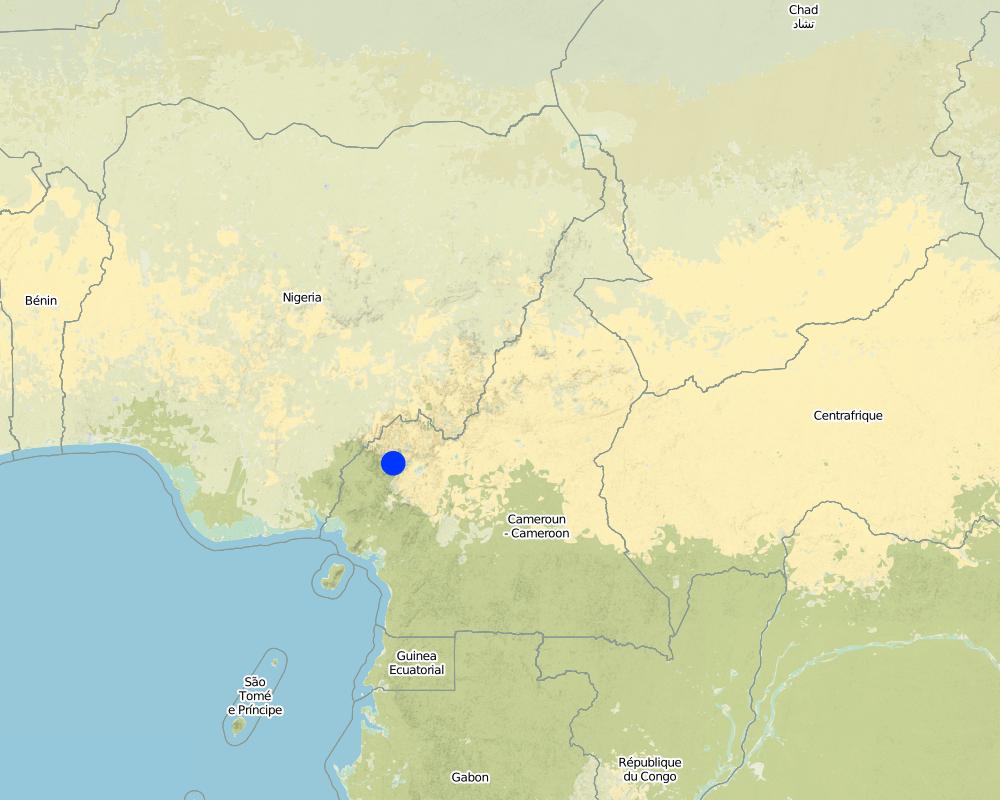Forest Beekeeping [ប្រទេសកាមេរូន]
- ការបង្កើត៖
- បច្ចុប្បន្នភាព
- អ្នកចងក្រង៖ Unknown User
- អ្នកកែសម្រួល៖ –
- អ្នកត្រួតពិនិត្យ Fabian Ottiger
technologies_1360 - ប្រទេសកាមេរូន
ពិនិត្យមើលគ្រប់ផ្នែក
ពង្រីកមើលទាំងអស់ បង្រួមទាំងអស់1. ព័ត៌មានទូទៅ
1.2 ព័ត៌មានលម្អិតពីបុគ្គលសំខាន់ៗ និងស្ថាប័នដែលចូលរួមក្នុងការវាយតម្លៃ និងចងក្រងឯកសារនៃបច្ចេកទេស
បុគ្គលសំខាន់ម្នាក់ (ច្រើននាក់)
អ្នកជំនាញឯកទេស SLM:
Verina Ingram
Cifor Cameroon
Yaounde
ប្រទេសកាមេរូន
ឈ្មោះគម្រោងដែលបានចងក្រងឯកសារ/ វាយតម្លៃលើបច្ចេកទេស (បើទាក់ទង)
Book project: SLM in Practice - Guidelines and Best Practices for Sub-Saharan Africa (SLM in Practice)ឈ្មោះអង្គភាពមួយ (ច្រើន) ដែលបានចងក្រងឯកសារ/ វាយតម្លៃបច្ចេកទេស (បើទាក់ទង)
CIFOR Center for International Forestry Research (CIFOR) - ប្រទេសឥណ្ឌា1.3 លក្ខខណ្ឌទាក់ទងទៅនឹងការប្រើប្រាស់ទិន្នន័យដែលបានចងក្រងតាមរយៈ វ៉ូខេត
អ្នកចងក្រង និង(បុគ្គលសំខាន់ៗ)យល់ព្រមទទួលយកនូវលក្ខខណ្ឌនានាទាក់ទងទៅនឹងការប្រើប្រាស់ទិន្នន័យដែលបានចងក្រងតាមរយៈវ៉ូខេត:
បាទ/ចា៎
2. ការពណ៌នាពីបច្ចេកទេស SLM
2.1 ការពណ៌នាដោយសង្ខេបពីបច្ចេកទេស
និយមន័យបច្ចេកទេស:
Apiculture (beekeeping) is a traditional practice providing a high number of non-timber forest products.
2.2 ការពណ៌នាលម្អិតពីបច្ចេកទេស
ការពណ៌នា:
Apiculture (beekeeping) has been traditionally practiced for at least a century in Cameroon; with forest-based apiculture increasing in the last 2 decades. The ancient art of honey hunting, and the more recent apiculture and its products like honey, wax, propolis, bee venom and royal jelly, are examples of non-timber forest products (NTFP). A number of projects were supporting production and marketing, due to the conservation and development benefits of beekeeping. Beekeeping has low establishment costs and requires little land or labour, and by providing a suitable environment for the hives in a favourable location (i.e. forest with a range of melliferous trees and plants and sufficient water available year round) it is possible to sustainably harvest a range of bee products on an annual basis. For processing of the honey, the honeycomb is filtered and honey can be bottled and sold. Higher value is obtained by packaging and labelling. In Cameroon up to 4 US$/kg can be achieved for good quality honey. It can also be sold for industrial use – for example bakeries, sweets. If combs are washed, the resulting honey-water can be made into wine. Wax needs to be melted and cleaned, and can then be sold ‘raw’ for a price of about 2-6 US$/kg, or further processed into candles, soaps and creams. In Cameroon, the consumer market is expanding and a small, niche export market for high quality, certified organic and fair trade wax, honey and propolis, is emerging. The exports to Europe and the US require quality assurance schemes that entail costs, expertise and collaboration between government and beekeepers. The number of hives per bee-farmer can vary considerably from a few up to 150 hives. Approximately 15 hives can be installed per hectare. Beekeepers can be good ‘guardians of the forests’, because they know that the forest provides both forage and water for the bees, and the water and materials needed to make hives and process apiculture products.
2.3 រូបភាពនៃបច្ចេកទេស
2.5 ប្រទេស/តំបន់/ទីតាំងកន្លែង ដែលបច្ចេកទេសត្រូវបានអនុវត្ត និងបានគ្រប់ដណ្តប់ដោយការវាយតម្លៃនេះ
ប្រទេស:
ប្រទេសកាមេរូន
តំបន់/រដ្ឋ/ខេត្ត:
Mount Oku region, Mountainous forests of Northwest Cameroon
បញ្ជាក់បន្ថែមពីលក្ខណៈនៃទីតាំង:
Bui, Boyo, Mezam and Donga Mantung divisions
Map
×2.6 កាលបរិច្ឆេទនៃការអនុវត្ត
ប្រសិនបើមិនច្បាស់ឆ្នាំ សូមបញ្ជាក់កាលបរិច្ឆេទដែលប្រហាក់ប្រហែល:
- ច្រើនជាង 50 ឆ្នាំមុន (ប្រពៃណី)
2.7 ការណែនាំពីបច្ចេកទេស
សូមបញ្ជាក់តើបច្ចេកទេសត្រូវបានណែនាំឱ្យអនុវត្តដោយរបៀបណា:
- ជាផ្នែកនៃប្រព័ន្ធប្រពៃណី (> 50 ឆ្នាំ)
3. ចំណាត់ថ្នាក់នៃបច្ចេកទេស SLM
3.1 គោលបំណងចម្បង (១ ឬច្រើន) នៃបច្ចេកទេសនេះ
- បង្កើតផលប្រយោជន៍សេដ្ឋកិច្ច
3.2 ប្រភេទដីប្រើប្រាស់មួយប្រភេទ (ច្រើនប្រភេទ) ដែលបានអនុវត្តបច្ចេកទេស

ដីព្រៃ/ដីដាំដើមឈើ
- Sustainable rainforest management
ផលិតផល និងសេវាកម្ម:
- ផ្លែឈើ និងគ្រាប់ធញ្ញជាតិ
- ផលិតផលព្រៃផ្សេងៗ
មតិយោបល់:
Major land use problems (land users’ perception): Deforestation, Overuse of natural ressources
3.4 ក្រុម SLM ដែលបច្ចេកទេសស្ថិតនៅក្នុង
- ការចិញ្ចឹមឃ្មុំ, វារីវប្បកម្ម, ការចិញ្ចឹមបសុបក្សី, ទន្សាយ, ដង្កូវនាង ។ល។
3.6 វិធានការ SLM ដែលបញ្ចូលនូវបច្ចេកទេស

វិធានការគ្រប់គ្រង
- M3: ប្លង់យោងទៅតាមធម្មជាតិ និងបរិស្ថានធម្មជាតិ
មតិយោបល់:
Main measures: management measures
3.7 កំណត់ប្រភេទនៃការធ្លាក់ចុះគុណភាពដីសំខាន់ៗដែលបច្ចេកទេសនេះបានដោះស្រាយ

ការធ្លាក់ចុះជីវសាស្ត្រនៃដី
- Bc: ការថយចុះនូវគម្របរុក្ខជាតិ
មតិយោបល់:
Main type of degradation addressed: Bc: reduction of vegetation cover
Main causes of degradation: deforestation / removal of natural vegetation (incl. forest fires), over-exploitation of vegetation for domestic use
3.8 ការពារ កាត់បន្ថយ ឬស្តារឡើងវិញនៃការធ្លាក់ចុះគុណភាពដី
បញ្ជាក់ពីគោលដៅរបស់បច្ចេកទេស ដែលផ្តោតទៅការធ្លាក់ចុះគុណភាពដី:
- ការការពារការធ្លាក់ចុះគុណភាពដី
4. បច្ចេកទេសជាក់លាក់ សកម្មភាពអនុវត្ត ធាតុចូល និងថ្លៃដើម
4.2 លក្ខណៈពិសេសនៃបច្ចេកទេស/ ពណ៌នាពីគំនូរបច្ចេកទេស
Technical knowledge required for field staff / advisors: moderate
Technical knowledge required for land users: low
Main technical functions: Indirectly deforestation / overuse of natural forests
Layout change according to natural and human environment
4.4 សកម្មភាពបង្កើត
| សកម្មភាព | ប្រភេទវិធានការ | ពេលវេលា | |
|---|---|---|---|
| 1. | Construction of hives (traditional or modern, depending on skills and availability/ cost of materials) | ការគ្រប់គ្រង | |
| 2. | Place hives on forest trees or on stands, above the level of fires, as well as away from ant and termite colonies | ការគ្រប់គ្រង | |
| 3. | None |
មតិយោបល់:
Establishing activities: extra information Harvesting of honey combs often done at night to minimize disturbance of the bees Comb washing water can be used in honey beer or wine in lidded buckets / basins or bottles or using as fermentation airlock
4.5 ថ្លៃដើម និងធាតុចូលដែលត្រូវការសម្រាប់ការបង្កើតបច្ចេកទេស
| បញ្ជាក់ពីធាតុចូល | ឯកតា | បរិមាណ | ថ្លៃដើមក្នុងមួយឯកតា | ថ្លៃធាតុចូលសរុប | % នៃថ្លៃដើមដែលចំណាយដោយអ្នកប្រើប្រាស់ដី | |
|---|---|---|---|---|---|---|
| កម្លាំងពលកម្ម | Labour | ha | 1,0 | 40,0 | 40,0 | 100,0 |
| សម្ភារៈ | Tools | ha | 1,0 | 10,0 | 10,0 | |
| សម្ភារៈ | Smoker | ha | 1,0 | 15,0 | 15,0 | |
| សម្ភារៈ | Buckets | ha | 1,0 | 12,0 | 12,0 | |
| សម្ភារៈ | Filtering materials | ha | 1,0 | 10,0 | 10,0 | |
| សម្ភារៈ | Bottles | ha | 1,0 | 10,0 | 10,0 | |
| សម្ភារៈសាងសង់ | Replacement/repair hive, filte | ha | 1,0 | 15,0 | 15,0 | |
| ថ្លៃដើមសរុបក្នុងការបង្កើតបច្ចេកទេស | 112,0 | |||||
4.6 សកម្មភាពថែទាំ
| សកម្មភាព | ប្រភេទវិធានការ | ពេលវេលា/ ភាពញឹកញាប់ | |
|---|---|---|---|
| 1. | Wait for natural colonisation or capture a swarm and transfer to hive | ការគ្រប់គ្រង | |
| 2. | Regular (weekly or monthly) checking of hive conditions to ensure that the colony is not disturbed by pests or damaged through wind/ rain. In drought periods a shallow bucket of water is provided to the bees. Reparation activities if needed. | ការគ្រប់គ្រង | |
| 3. | Harvest honey (as soon as sufficient is available), wax and propolis, using a 'smoker' and clean bucket, leaving brood combs to maintain the colony (usually annually at end of rainy and/or flowering season; depends on location) | ការគ្រប់គ្រង | |
| 4. | Filter honey from combs to separate honey and wax; then bottle and pack | ការគ្រប់គ្រង | |
| 5. | Process wax (e.g. washing comb and boiling in water or solar melting box) and melt into moulds, using a press or centrifuge. | ការគ្រប់គ្រង |
4.7 កំណត់ថ្លៃដើមសម្រាប់ការថែទាំ/ សកម្មភាពរបស់បច្ចេកទេស (ក្នុងរយៈពេលមួយឆ្នាំ)
| បញ្ជាក់ពីធាតុចូល | ឯកតា | បរិមាណ | ថ្លៃដើមក្នុងមួយឯកតា | ថ្លៃធាតុចូលសរុប | % នៃថ្លៃដើមដែលចំណាយដោយអ្នកប្រើប្រាស់ដី | |
|---|---|---|---|---|---|---|
| កម្លាំងពលកម្ម | Labour | ha | 1,0 | 60,0 | 60,0 | 100,0 |
| សម្ភារៈសាងសង់ | Replacement/repair hive, filte | ha | 1,0 | 5,0 | 5,0 | 100,0 |
| ថ្លៃដើមសរុបសម្រាប់ការថែទាំដំណាំតាមបច្ចេកទេស | 65,0 | |||||
មតិយោបល់:
Machinery/ tools: machete, axe, knife
5. លក្ខណៈបរិស្ថានធម្មជាតិ និងមនុស្ស
5.1 អាកាសធាតុ
បរិមាណទឹកភ្លៀងប្រចាំឆ្នាំ
- < 250 មម
- 251-500 មម
- 501-750 មម
- 751-1,000 មម
- 1,001-1,500 មម
- 1,501-2,000 មម
- 2,001-3,000 មម
- 3,001-4,000 មម
- > 4,000 មម
លក្ខណៈពិសេស/ មតិយោបល់លើរដូវភ្លៀង:
2000-2400
តំបន់កសិអាកាសធាតុ
- មានភ្លៀងមធ្យម
Thermal climate class: tropics
5.2 សណ្ឋានដី
ជម្រាលជាមធ្យម:
- រាបស្មើ (0-2%)
- ជម្រាលតិចតួច (3-5%)
- មធ្យម (6-10%)
- ជម្រាលខ្ពស់បន្តិច (11-15%)
- ទីទួល (16-30%)
- ទីទួលចោត (31-60%)
- ទីទួលចោតខ្លាំង (>60%)
ទម្រង់ដី:
- ខ្ពង់រាប
- កំពូលភ្នំ
- ជម្រាលភ្នំ
- ជម្រាលទួល
- ជម្រាលជើងភ្នំ
- បាតជ្រលងភ្នំ
តំបន់តាមរយៈកម្ពស់ :
- 0-100 ម
- 101-500 ម
- 501-1,000 ម
- 1,001-1,500 ម
- 1,501-2,000 ម
- 2,001-2,500 ម
- 2,501-3,000 ម
- 3,001-4,000 ម
- > 4,000 ម
មតិយោបល់ និងបញ្ចាក់បន្ថែមអំពីសណ្ឋានដី :
Altitudinal zone: 1501-2000 m a.s.l. (Mountain forests)
Landforms: Also valley floors
5.3 ដី
ជម្រៅដីជាមធ្យម:
- រាក់ខ្លាំង (0-20 សម)
- រាក់ (21-50 សម)
- មធ្យម (51-80 សម)
- ជ្រៅ (81-120 សម)
- ជ្រៅខ្លាំង (> 120 សម)
វាយនភាពដី (ស្រទាប់លើ):
- ម៉ត់/ ធ្ងន់ (ឥដ្ឋ)
បើអាចសូមភ្ជាប់ការពណ៌នាពីដីឱ្យបានច្បាស់ ឬព័ត៌មានដែលអាចទទួលបាន ឧ. ប្រភេទដី, pH ដី/ ជាតិអាស៊ីត, សមត្ថភាពផ្លាស់ប្តូរកាចុង, វត្តមាននីត្រូសែន, ភាពប្រៃ ។ល។:
Soil texture: FIne/heavy (lateritic clay)
5.5 ជីវៈចម្រុះ
ភាពសម្បូរបែបនៃប្រភេទ:
- ខ្ពស់
5.6 លក្ខណៈនៃអ្នកប្រើប្រាស់ដីដែលអនុវត្តបច្ចេកទេស
ទីផ្សារនៃប្រព័ន្ធផលិតកម្ម:
- ពាក់កណ្តាលពាណិជ្ជកម្ម (ផ្គត់ផ្គង់ខ្លួនឯង/ ពាណិជ្ជកម្ម
សូមបញ្ជាក់ពីលក្ខណៈពាក់ព័ន្ធផ្សេងទៀតអំពីអ្នកប្រើប្រាស់ដី:
Difference in the involvement of women and men: small to medium scale, very poor to average level of wealth; individuals, groups cooperative or employee; cooperatives are mainly used for marketing products and/ or buying material
Population density: 50-100 persons/km2
Relative level of wealth: average, poor, very poor
5.8 ភាពជាម្ចាស់ដី កម្មសិទ្ធប្រើប្រាស់ដី និងកម្មសិទ្ធប្រើប្រាស់ទឹក
កម្មសិទ្ធិប្រើប្រាស់ដី:
- ជាក្រុម (មានដែនកំណត់)
មតិយោបល់:
Land ownership: community forest or individual (titled and not titled)
Land use rights: legal form of community management; many people keep bees by the forest edge on their farms, usually on privately owned land
Land ownership: communal / village, individual, not titled, individual, titled
6. ផលប៉ះពាល់ និងការសន្និដ្ឋាន
6.1 ផលប៉ះពាល់ក្នុងបរិវេណអនុវត្តបច្ចេកទេសដែលកើតមាន
ផលប៉ះពាល់លើសេដ្ឋកិច្ចសង្គម
ចំណូល និងថ្លៃដើម
ចំណូលក្នុងកសិដ្ឋាន
មតិយោបល់/ ការបញ្ជាក់:
Increased income from honey, wax and propolis sales
ផលប៉ះពាល់ទៅលើវប្បធម៌សង្គម
សន្តិសុខស្បៀង/ ភាពគ្រប់គ្រាន់ខ្លួនឯង
មតិយោបល់/ ការបញ្ជាក់:
Subsistence use and sales of apiculture products e.g. wax / honey / propolis soaps, cosmetic, creams
ស្ថានភាពសុខភាព
មតិយោបល់/ ការបញ្ជាក់:
Own consumption of honey food and medicine and propolis (medicinal use)
ផលប៉ះពាល់ទៅលើអេកូឡូស៊ី
ជីវចម្រុះ៖ ដំណាំ, សត្វ
ដំណាំគម្រប
មតិយោបល់/ ការបញ្ជាក់:
Conservation of forests and particularly melliferous trees as well as pollination of forests and crops
ជីវម៉ាស/ កាបូនលើដី
មតិយោបល់/ ការបញ្ជាក់:
Conservation of forests and particularly melliferous trees as well as pollination of forests and crops
ភាពសម្បូរបែបនៃរុក្ខជាតិ
មតិយោបល់/ ការបញ្ជាក់:
Conservation of forests and particularly melliferous trees as well as pollination of forests and crops
ប្រភេទសត្វមានប្រយោជន៍
6.2 ផលប៉ះពាល់ក្រៅបរិវេណអនុវត្តបច្ចេកទេសដែលកើតមាន
Pollination
មតិយោបល់/ ការបញ្ជាក់:
Pollination in area approx 4-6 km from hive
6.3 ភាពប្រឈម និងភាពរួសនៃបច្ចេកទេសទៅនឹងការប្រែប្រួលអាកាសធាតុ និងគ្រោះអាកាសធាតុ/ គ្រោះមហន្តរាយ (ដែលដឹងដោយអ្នកប្រើប្រាស់ដី)
មតិយោបល់:
Unknown sensitivity of bees to climatic extremes; resilience of bees is assumed, but changes in honey quality and quantity depending on forage available with changes in forest cover/ structure
6.4 ការវិភាគថ្លៃដើម និងអត្ថប្រយោជន៍
តើផលចំណេញ និងថ្លៃដើមត្រូវបានប្រៀបធៀបគ្នាយ៉ាងដូចម្តេច (ទស្សនៈរបស់អ្នកប្រើប្រាស់ដី)?
រយៈពេលខ្លី:
អវិជ្ជមានតិចតួច
រយៈពេលវែង:
វិជ្ជមាន
តើផលចំណេញ និងការថែទាំ/ ជួសជុលត្រូវបានប្រៀបធៀបគ្នាយ៉ាងដូចម្តេច (ទស្សនៈរបស់អ្នកប្រើប្រាស់ដី)?
រយៈពេលខ្លី:
ប៉ះពាល់តិចតួចបំផុត
រយៈពេលវែង:
វិជ្ជមាន
មតិយោបល់:
Initial investment in hives often recouped in 2-5 years, depending on level of production
6.5 ការទទួលយកបច្ចេកទេស
បើអាច សូមបញ្ជាក់ពីបរិមាណ (ចំនួនគ្រួសារ និង/ ឬតំបន់គ្របដណ្តប់):
4500 households and 100% of the area covered
ក្នុងចំណោមគ្រួសារទាំងអស់ដែលអនុវត្តបច្ចេកទេស តើមានប៉ុន្មានគ្រួសារដែលចង់ធ្វើដោយខ្លួនឯង ដោយមិនទទួលបានសម្ភារៈលើកទឹកចិត្ត/ប្រាក់ឧបត្ថម្ភ?:
- 90-100%
មតិយោបល់:
100% of land user families have adopted the Technology without any external material support
4500 land user families have adopted the Technology without any external material support
There is a strong trend towards spontaneous adoption of the Technology
Comments on adoption trend: Established and knowledgeable beekeepers in a community aid dissemination of technology and spontaneous adoption.
6.7 ភាពខ្លាំង/ គុណសម្បត្តិ/ ឱកាសនៃបច្ចេកទេស
| ភាពខ្លាំង/ គុណសម្បត្តិ/ ឱកាស ទស្សនៈរបស់បុគ្គលសំខាន់ៗ |
|---|
| Protection of the forest because beekeepers are aware of the benefits they receive from this ecosystem |
6.8 ភាពខ្សោយ/ គុណវិបត្តិ/ ហានិភ័យនៃបច្ចេកទេស និងវិធីសាស្ត្រដោះស្រាយ
| ភាពខ្សោយ/ គុណវិបត្តិ/ ហានិភ័យ ទស្សនៈរបស់អ្នកប្រើប្រាស់ដី | តើបច្ចេកទេសទាំងនោះបានដោះស្រាយបញ្ហាដូចម្តេច? |
|---|---|
| Pests destroy hives / eat honey (e.g. honey badgers, ants, termites, civets) | relocate hives, stronger/ different hive construction, regular checks |
| Theft of hives | patrol forest, make agreements in community, locate hives near farms/houses, chain or lock hive. |
| Low production | relocate hives to more forested areas, ensure hive located with < 2 km from water source in dry season |
| Bush fires can destroy hive | agreements with farmers/pastoralists about bush fire patrols in dry season, create fire breaks around hive and support trees |
| Rain can destroy hive | use of metal, sheet, grass, raffia or wood as protective ‘roof’, place in a ‘’bee house’’ of locally constructed materials, or under a simple shelter, and experiment with different designs |
ការតភ្ជាប់ និងម៉ូឌុល
ពង្រីកមើលទាំងអស់ បង្រួមទាំងអស់ការតភ្ជាប់
គ្មានការតភ្ជាប់
ម៉ូឌុល
គ្មានម៉ូឌុល


